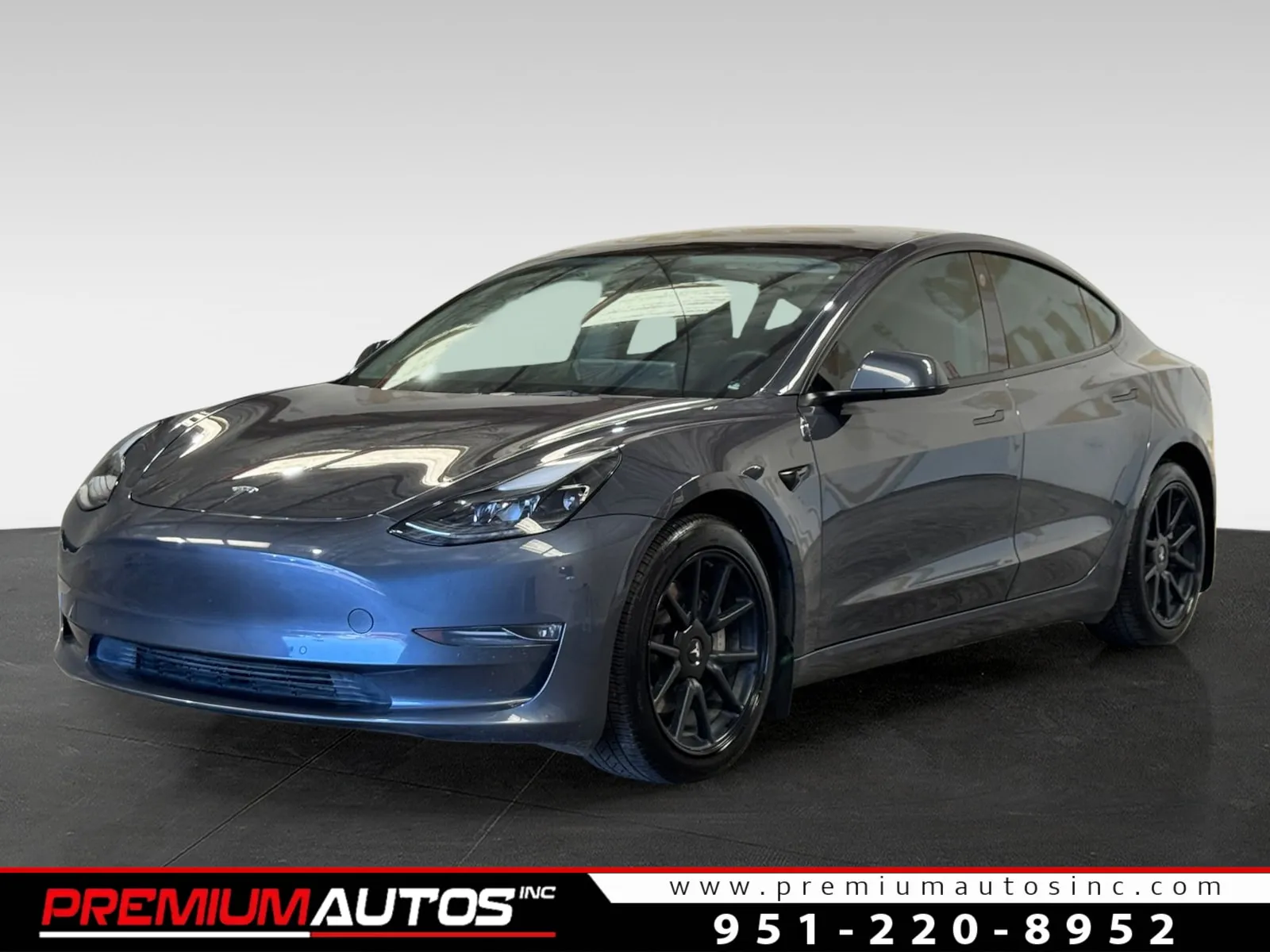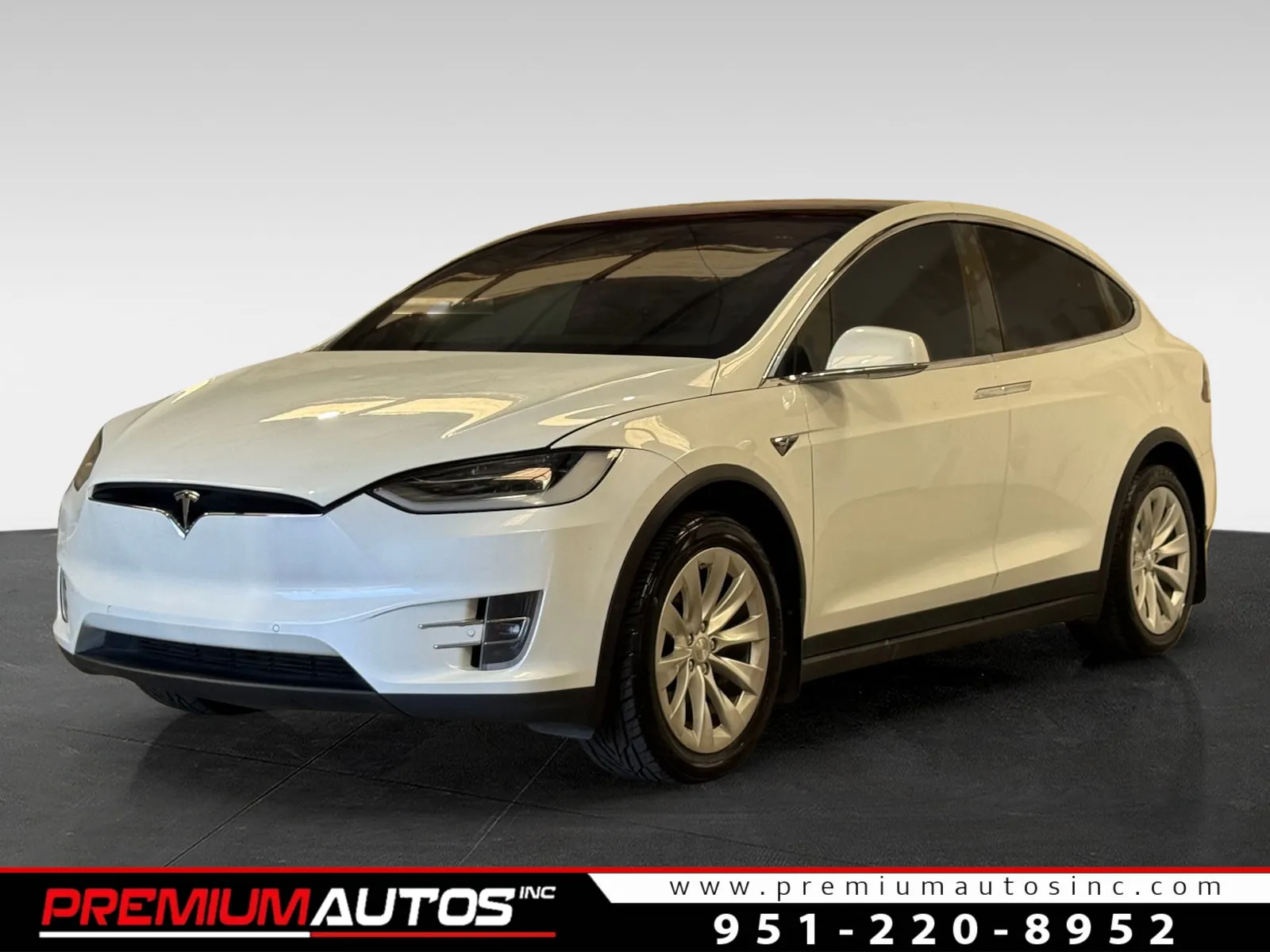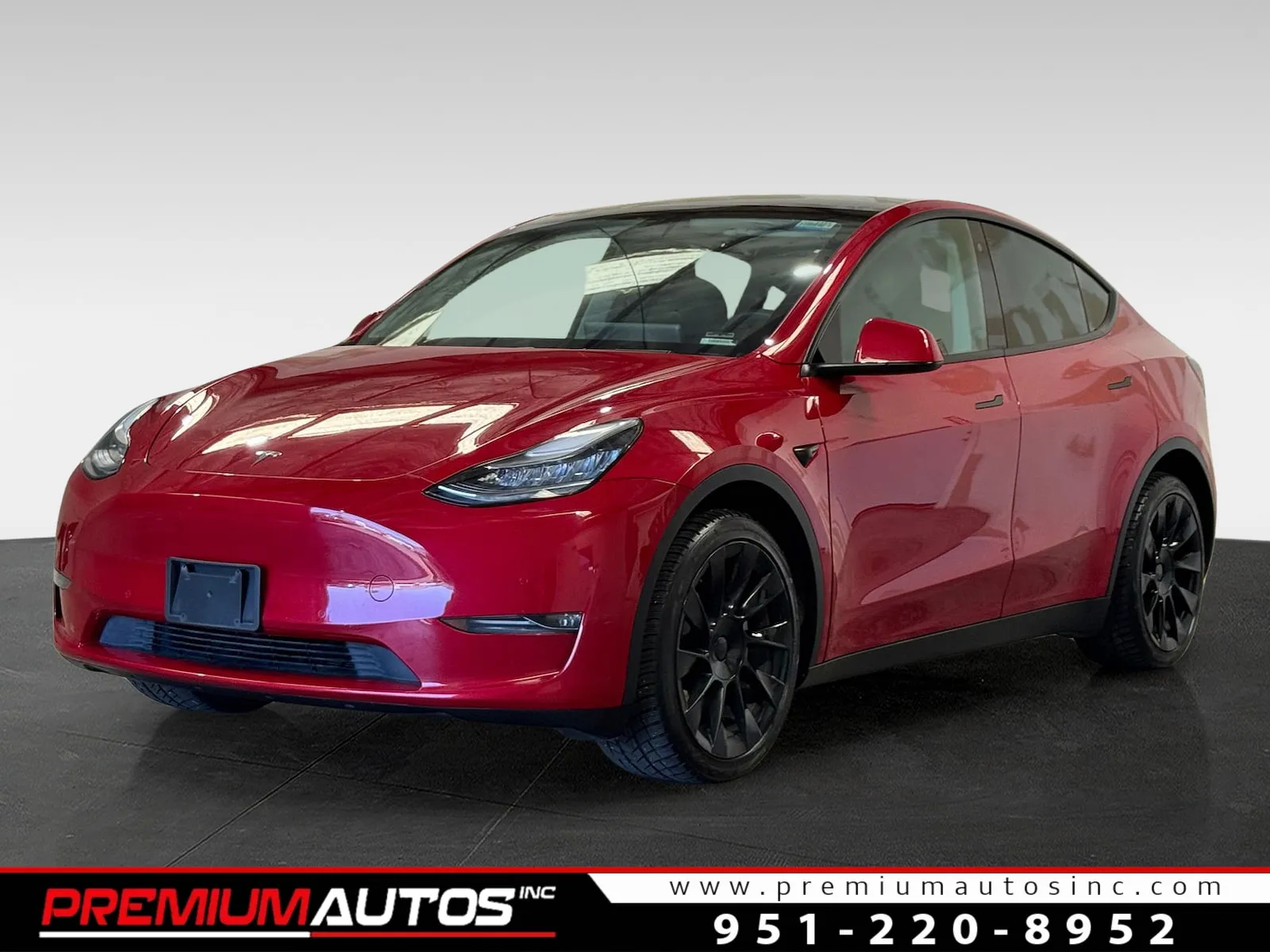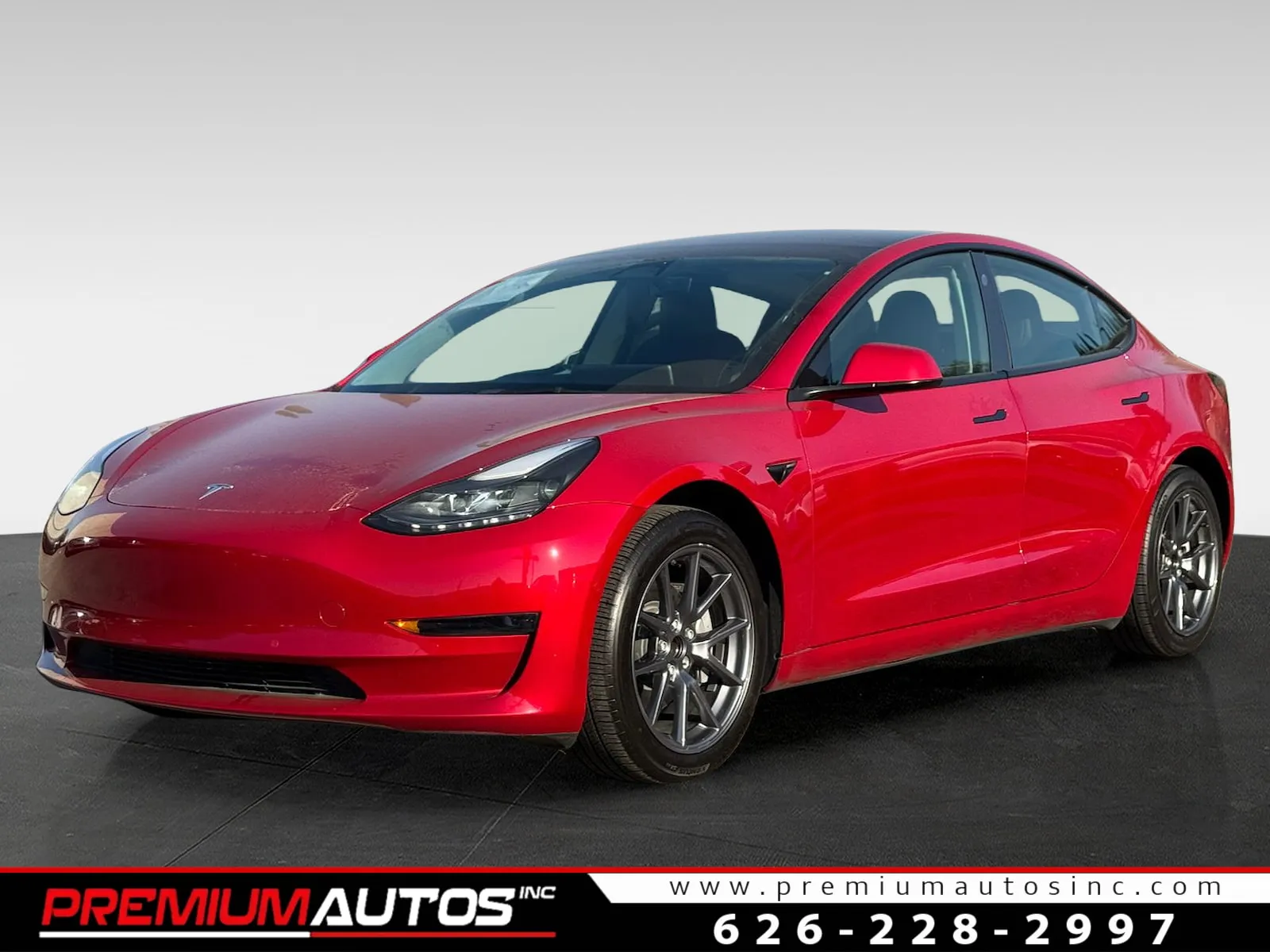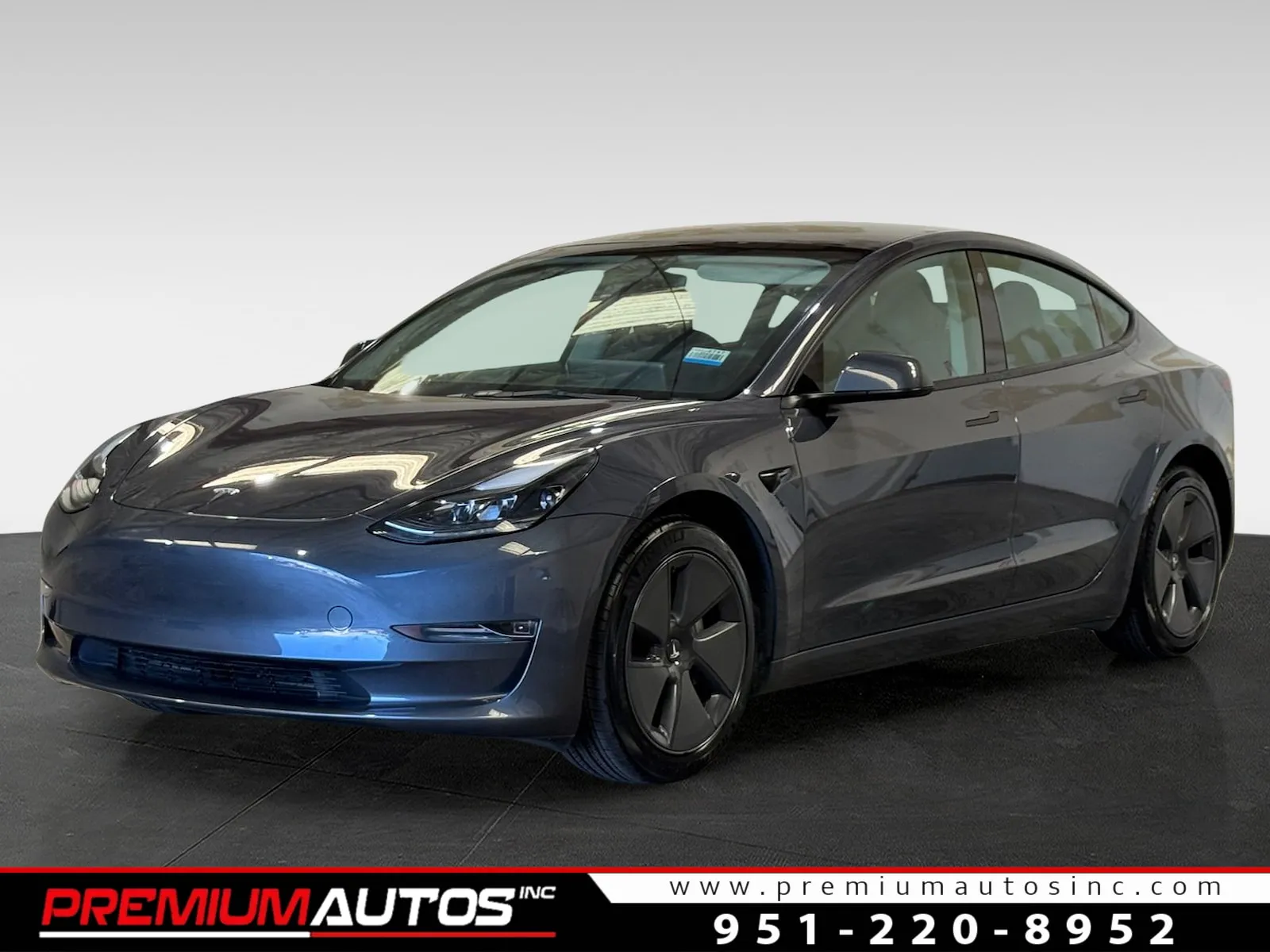Ultimate Guide to Orange County EV Incentives 2025
Ultimate Guide to Orange County EV Incentives 2025
Switching to an electric vehicle (EV) in 2025 has never been more affordable for Orange County residents. With a mix of federal, state, and local incentives, you can save thousands of dollars on EV purchases, home chargers, and ongoing costs. Here's what you need to know:
- Federal Tax Credits: Up to $7,500 for new EVs and $4,000 for used EVs.
- State Rebates: Programs like Clean Cars 4 All (CC4A) offer up to $12,000, with an additional $2,000 for charging equipment.
- Local Utility Rebates: Southern California Edison (SCE) and Orange County Power Authority (OCPA) provide rebates for EV chargers and installation costs, with amounts ranging from $1,000 to $4,200.
- Income-Based Programs: Lower-income households can access enhanced incentives, such as higher rebates or financing support through programs like CC4A and the Driving Clean Assistance Program (DCAP).
These programs, combined with lower electricity costs compared to gas, make EV ownership a cost-effective choice. By stacking these incentives and exploring financing options, you can significantly reduce the upfront and long-term costs of going electric.
Does California Have an EV Tax Credit? - CountyOffice.org
California State EV Incentives for Orange County Residents
California provides a range of EV incentives aimed at reducing the costs of ownership for Orange County residents. While some programs have ended, others are still available to help drivers transition to cleaner transportation options.
Clean Cars 4 All (CC4A) Program
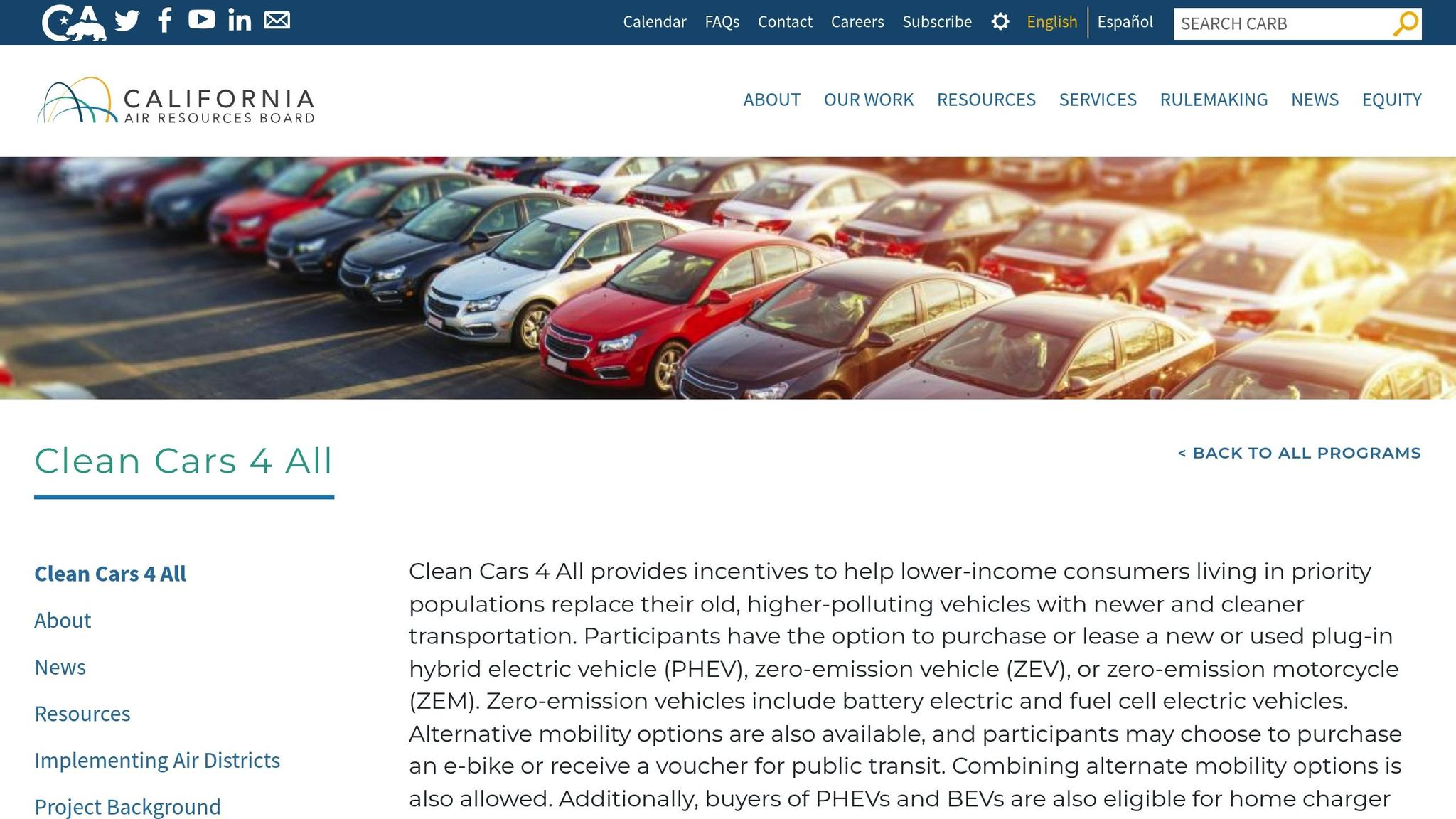
The Clean Cars 4 All program is designed for lower-income residents in designated areas, enabling them to replace older, high-emission vehicles with cleaner alternatives. Orange County residents can apply through the South Coast Air Quality Management District (SCAQMD), provided they meet specific income and residency requirements.
Through this program, participants can choose to purchase or lease new or used plug-in hybrid electric vehicles (PHEVs), zero-emission vehicles (ZEVs), or zero-emission motorcycles (ZEMs). Other options, such as e-bikes or public transit vouchers, are also available for those exploring alternative mobility solutions.
To qualify, applicants must meet a few key criteria:
- Be the registered owner of a vehicle with a title in their name.
- Prove California residency.
- Have a household income at or below 300% of the Federal Poverty Level.
- Not have previously received a Clean Cars 4 All incentive.
- Commit to retiring or scrapping a functional vehicle.
The program offers financial incentives based on income level and location:
| Vehicle Type | Standard Incentive | Disadvantaged Communities |
|---|---|---|
| 8-year-old or newer PHEV | $9,500 + up to $2,000 for charging | $11,500 + up to $2,000 for charging |
| 8-year-old or newer ZEV | $10,000 + up to $2,000 for charging | $12,000 + up to $2,000 for charging |
| Zero-Emission Motorcycle | $4,500 | $6,500 |
| Mobility Option | $7,500 face value | $7,500 face value |
Additionally, buyers can receive up to $5,000 for adaptive equipment costs. Replacement vehicles must be 8 years old or newer, meaning models from 2018 or later in 2025.
For those who don’t qualify through SCAQMD, the Driving Clean Assistance Program (DCAP) offers alternative financing options, even for individuals without a vehicle to scrap.
California Clean Vehicle Rebate Project (CVRP)
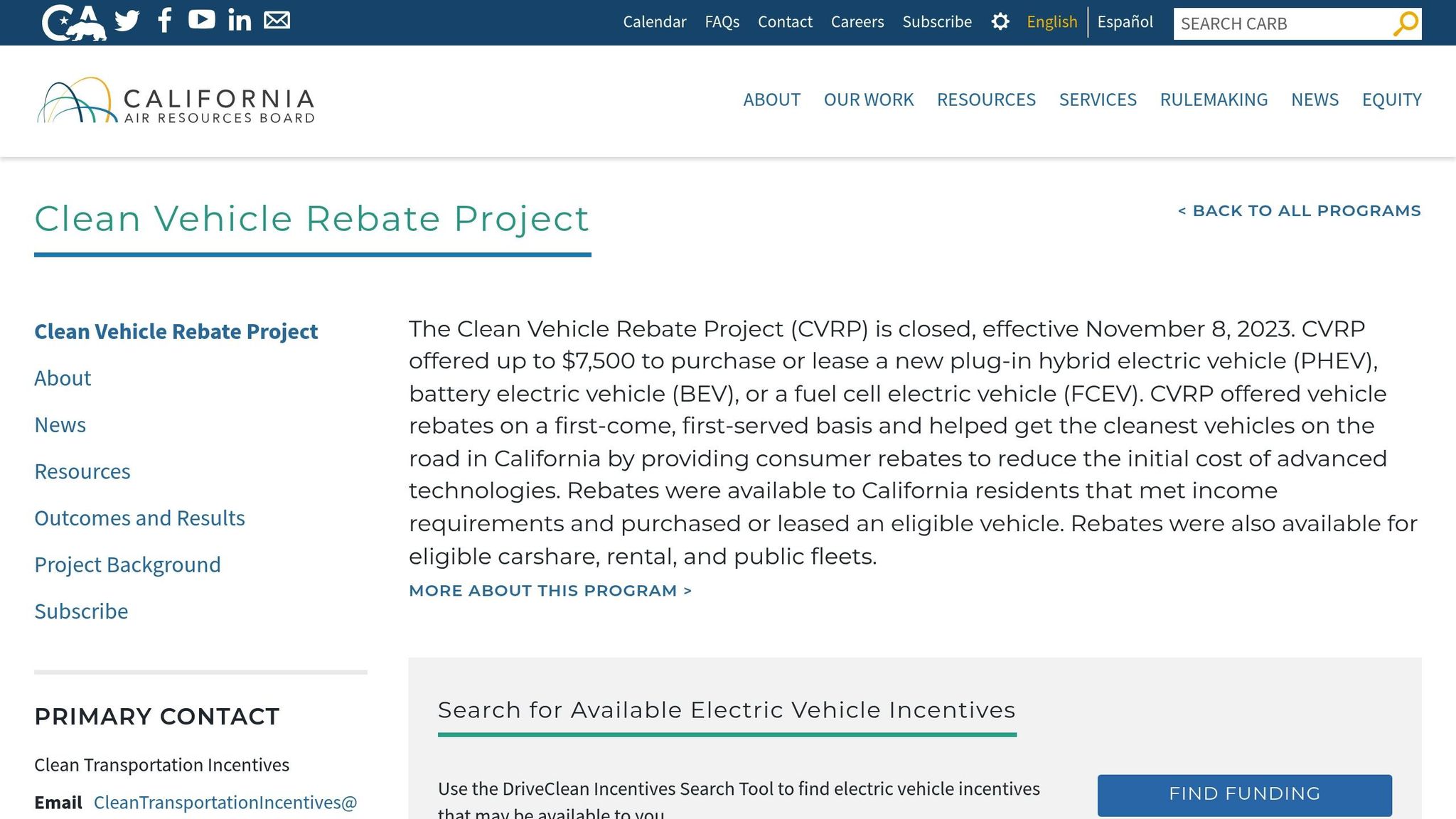
The Clean Vehicle Rebate Project, a long-standing EV incentive program, officially ended on November 8, 2023. Since its launch in 2010, CVRP helped put nearly 600,000 clean vehicles on California roads.
CVRP provided $2,000 rebates for most Californians purchasing or leasing new plug-in hybrid, battery electric, or fuel cell electric vehicles. Income-qualified households earning up to 400% of the federal poverty level could receive up to $5,500 in additional rebates.
While the closure of CVRP marks a shift in the state’s strategy, programs like Clean Cars 4 All and DCAP continue to offer financial support for EV buyers. For additional incentives, Orange County residents can visit the Drive Clean CA.gov website.
EV Charger and Public Charging Incentives
California continues to invest heavily in EV charging infrastructure. By 2025, the state boasts over 17,300 public charging stations, including more than 15,300 Level 2 chargers, 2,300 DC Fast stations, and 524 Tesla Supercharger stations with 8,361 ports.
Southern California Edison (SCE) offers rebates to help offset the cost of home charging installations. Residential customers can receive up to $4,200 for electric panel upgrades needed for Level 2 chargers. Even those in disadvantaged communities who don’t meet standard income requirements may qualify for up to $2,100.
SCE also provides rebates for businesses, government entities, and multifamily properties, with higher amounts available for sites in disadvantaged areas.
The Fast Charge California Project (FCCP) supports the installation of DC fast chargers, covering up to 100% of approved costs. FCCP-1, as of August 5, 2025, offers incentives capped at $100,000 per charging port, depending on the charger’s power output:
- 150 kW to 274.99 kW: $55,000 per charging port.
- 275 kW or higher: $100,000 per charging port.
Public charging remains affordable, with rates typically ranging from $0.20–$0.30 per kWh for Level 2 chargers and $0.40–$0.60 per kWh for DC Fast Charging. Many utilities also offer time-of-use electricity rates, encouraging EV owners to charge during off-peak hours for lower costs.
For Orange County residents considering electric vehicles from Premium Autos Inc, these charging incentives can make home installations more affordable while ensuring access to a vast public charging network.
Orange County Local EV Incentives and Programs
Orange County residents can take advantage of various regional programs that work alongside state initiatives to promote electric vehicle (EV) adoption. These efforts, supported by local air quality agencies and utility partnerships, aim to maximize savings for EV buyers.
South Coast Air Quality Management District (SCAQMD) Programs
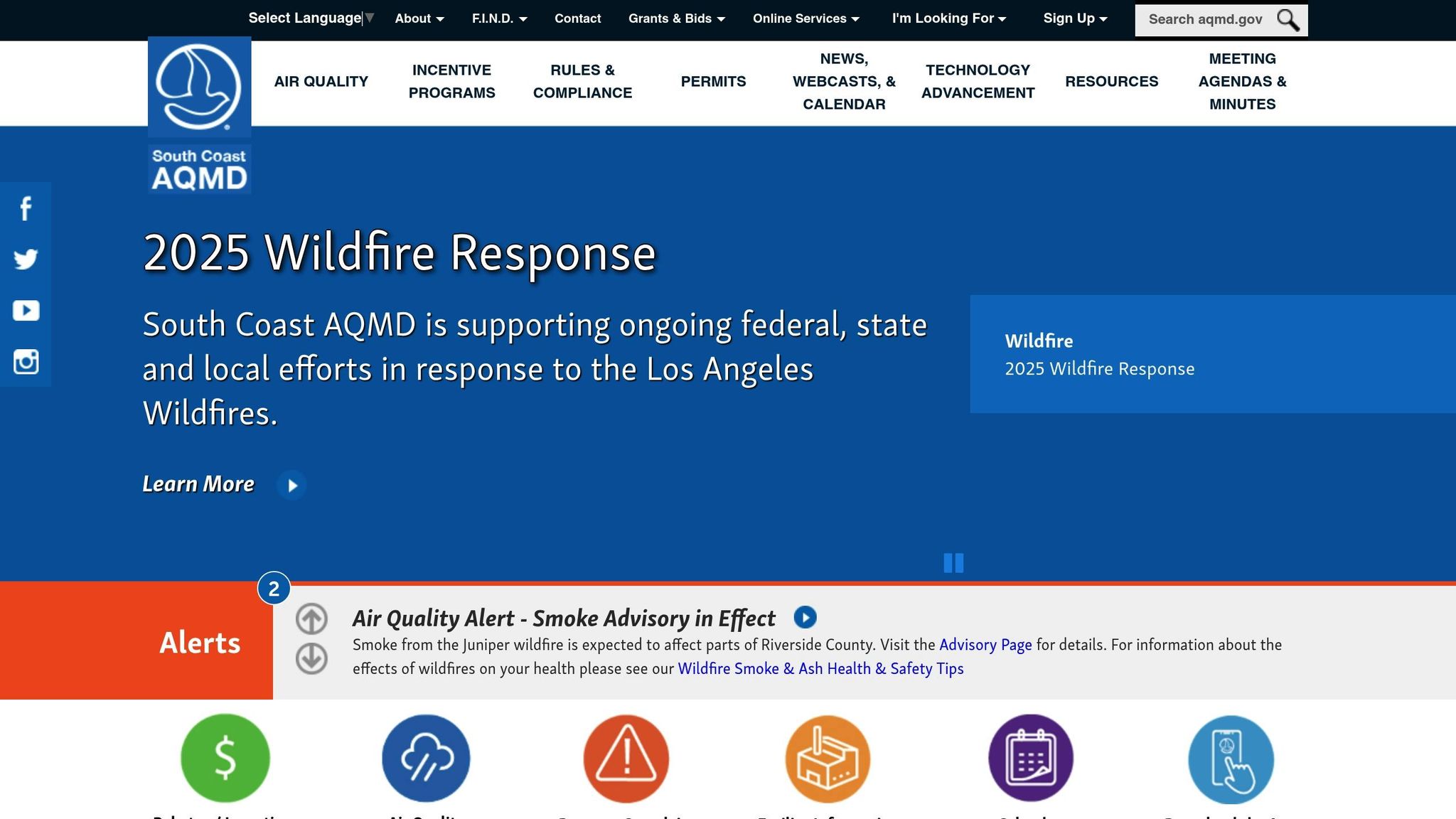
The South Coast Air Quality Management District (SCAQMD) plays a key role in encouraging EV adoption in Orange County. One of its standout initiatives is the Replace Your Ride program, which offers up to $9,500 to eligible residents for replacing older, high-polluting vehicles. For income-qualified applicants, this program also includes enhanced incentives, making EV ownership more accessible.
In addition to vehicle replacement funds, income-qualified participants can receive rebates for residential EV chargers - up to $500 or the full cost of the charger, whichever is lower. This ensures that families can install home charging stations without facing financial hurdles.
SCAQMD also oversees the Air Quality Investment Program (AQIP), which provides funding to employers within its jurisdiction. These funds can be used for initiatives like zero-emission vehicle purchases and scrapping older vehicles, further supporting EV adoption at workplaces.
Southern California Edison (SCE) Rebates
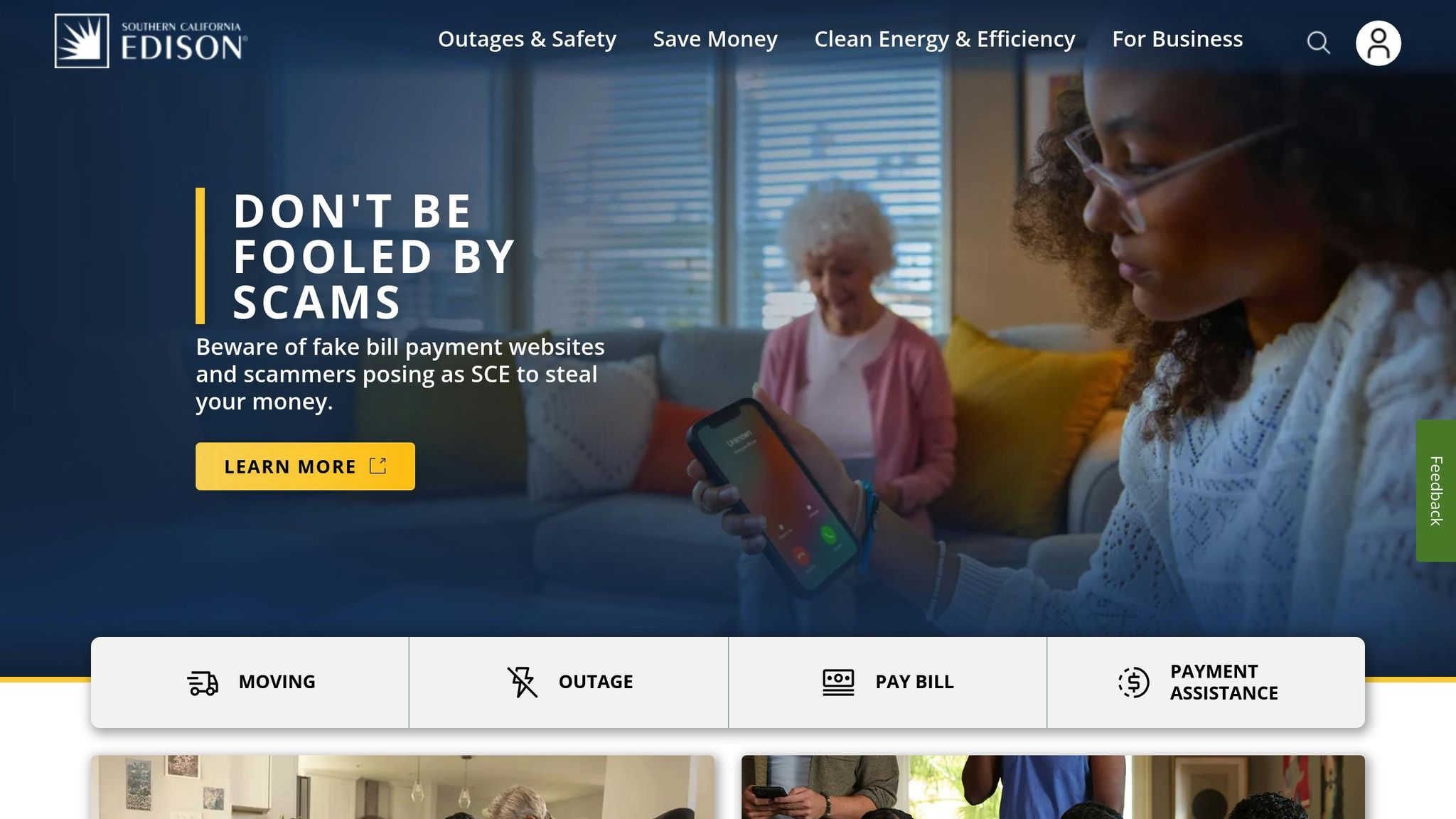
Southern California Edison (SCE) offers several rebate programs tailored for Orange County residents, including the SCE Pre-Owned EV Rebate. This program has two tiers:
- A Standard Rebate of $1,000 available to all SCE customers.
- A Rebate Plus option of $4,000 for income-qualified applicants.
To qualify, residents must apply within 180 days of their EV purchase or lease. Applications can be submitted online through SCE's rebate portal, where applicants need to provide proof of purchase and SCE account details.
The Rebate Plus option is especially beneficial for households enrolled in public assistance programs or those meeting specific income criteria, making EVs more affordable for lower-income families. These rebates are funded through California's Low Carbon Fuel Standard Program, ensuring ongoing support for EV buyers.
Other Local and Regional Programs
The Orange County Power Authority (OCPA) has also introduced an EV charger rebate program, launched in April 2025. This program offers rebates of up to $1,000 for Level 2 hard-wired EV chargers purchased through the OCPA Marketplace, which serves residents in OCPA member cities.
With chargers priced between $500 and $600 on the OCPA Marketplace, the rebate effectively covers the entire cost. The program officially began on May 1, 2025, and is part of OCPA's broader mission as a nonprofit agency to reinvest in community-focused energy efficiency initiatives.
| Program | Rebate Amount | Eligibility | Application Window |
|---|---|---|---|
| SCAQMD Replace Your Ride | Up to $9,500 | Income-qualified residents | Ongoing |
| SCE Pre-Owned EV (Standard) | $1,000 | All SCE customers | 180 days from purchase |
| SCE Pre-Owned EV (Plus) | $4,000 | Income-qualified customers | 180 days from purchase |
| OCPA EV Charger Rebate | Up to $1,000 | OCPA member city residents | Ongoing since May 2025 |
For those considering an EV purchase, local dealerships like Premium Autos Inc make it easier to combine these regional programs with state-level incentives. By stacking rebates from SCE, SCAQMD, and OCPA, Orange County residents can significantly lower the cost of EV ownership while also benefiting from improved access to charging infrastructure.
sbb-itb-66f4901
Utility Programs and Cost Savings for EV Owners
In Orange County, utility companies have rolled out several programs designed to help EV owners save on charging costs and reduce overall electricity expenses. By combining these programs with other incentives, EV owners can significantly cut down the total cost of ownership. Let’s dive into how rebates for home chargers, time-of-use (TOU) plans, and smart charging programs can make a real difference.
Home Charger Installation Rebates
Upgrading to a Level 2 home charger is a game-changer for EV owners, and local utilities are making it more affordable through generous rebates. For example, Southern California Edison (SCE) offers up to $4,200 in rebates through its Charge Ready Home program, specifically for electrical panel upgrades required for charger installation.
Anaheim Public Utilities (APU) takes a slightly different approach. Starting September 1, 2025, APU will provide a $300 rebate for installing a standard Level 2 charger. If you opt for a networked charger and enroll in a time-based electricity rate, the rebate increases to $600.
Meanwhile, the Orange County Power Authority (OCPA) offers up to $1,000 in rebates for residential Level 2 chargers, further easing the financial burden for EV owners (see Local EV Incentives).
Time-of-Use Electricity Plans
Once you’ve installed your home charger, TOU electricity plans are a great way to keep your charging costs low. SCE offers residential TOU rate plans with rates ranging from 23¢ to 74¢ per kWh as of May 2025.
One standout option is the TOU-D-PRIME plan, tailored for customers with EVs, solar panels, battery storage, or heat pump HVAC systems. Charging your EV during off-peak hours (8 a.m. to 4 p.m.) under this plan is estimated to cost less than $2 per gallon of gasoline equivalent.
Other plans, like TOU-D-4-9PM and TOU-D-5-8PM, cater to different energy usage patterns. The main distinction lies in the peak hour windows: TOU-D-5-8PM has a shorter on-peak period but slightly higher rates during those hours compared to TOU-D-4-9PM.
Other Utility Programs for EV Adoption
Beyond rebates and TOU plans, programs like SCE’s Charge Smart – SoCal offer additional savings. Participants can earn up to $100 annually, including a $50 enrollment bonus, and save up to $650 through off-peak charging. For those who install a second meter dedicated to EV charging, SCE also provides a monthly "EV Meter Credit" to offset basic charges.
| Utility Program | Rebate/Savings | Special Requirements | Timeline |
|---|---|---|---|
| SCE Charge Ready Home | Up to $4,200 | Electrical panel upgrade needed | Ongoing |
| APU Level 2 Charger | $300–$600 | Networked charger + TOU for higher rebate | Effective Sept 1, 2025 |
| SCE Charge Smart | Up to $100/year + $650 savings | Smart charging participation | Ongoing |
For those considering an EV, local dealerships like Premium Autos Inc can guide you through these utility programs alongside vehicle rebates. By combining rebates for home chargers, TOU plans, and smart charging programs, EV owners can enjoy significant long-term savings, making the shift to electric vehicles more accessible and cost-effective.
How to Stack Incentives and Financing Options
By combining state and local rebates with smart financing strategies, you can significantly cut the cost of owning an electric vehicle (EV). Timing your applications and aligning various programs can make a big difference in your overall savings. Let’s dive into how you can layer incentives and pair them with financing options to maximize your benefits.
Combining Rebates and Tax Credits
The key to saving big on an EV is stacking federal, state, and local incentives. For example, residents of Orange County could qualify for up to $14,000 in state programs like Clean Cars 4 All (CC4A) and the Driving Clean Assistance Program (DCAP). Add to that federal tax credits of up to $7,500 for new EVs or $4,000 for used ones, and the savings grow even more. On top of that, utility providers like Southern California Edison (SCE) and Orange County Power Authority (OCPA) offer rebates for pre-owned EVs and home chargers.
Here’s a breakdown of how these incentives can add up:
| Incentive Type | Program | Maximum Amount | Income Requirements |
|---|---|---|---|
| State Program | Clean Cars 4 All (CC4A) | $12,000 + $2,000 for charging | Yes |
| State Program | Driving Clean Assistance (DCAP) | $14,000 total | Yes |
| Federal Tax Credit | New EV Credit | $7,500 | Income limits apply |
| Federal Tax Credit | Used EV Credit | $4,000 | Income limits apply |
| Utility Rebate | SCE Pre-Owned EV | $1,000–$4,000 | Based on income |
| Utility Rebate | OCPA EV Charger | $1,000 | None specified |
Financing Options for EV Buyers
Smart financing can make EV ownership even more affordable. Leasing is especially appealing because leased EVs qualify for a commercial clean vehicle credit, which has fewer restrictions compared to the clean vehicle tax credit for outright purchases. Many dealerships apply the federal tax credit directly as a discount on the lease, lowering your monthly payments right away.
For flexible financing, Premium Autos Inc provides tools like pre-approval options and loan calculators to help estimate your monthly costs before you commit. They also offer free trade-in evaluations, which can give you extra purchasing power - whether you handle it online or in person.
Application Process Tips
Once you’ve stacked your incentives, follow these steps to simplify your application process:
- Use online tools like Drive Clean CA.gov and PlugStar to search for local EV incentives by zip code.
- For state programs like CC4A and DCAP, prepare necessary documents in advance, including proof of income, vehicle registration, and smog check results.
- Contact your utility provider directly for rebate applications. For example, SCE customers can access up to $4,200 in rebates to cover costs for upgrading electric panels for Level 2 EV chargers. If you live in a disadvantaged community, you may qualify for an additional $2,100 rebate.
Keep in mind that federal tax credits have strict eligibility requirements, such as where the vehicle is assembled and the sourcing of battery components. If you’re unsure about meeting these criteria, leasing might be a better option since it offers immediate savings without the same restrictions. Also, remember that some rebates require you to keep the vehicle for a minimum period, typically two to three years. If you plan to sell or trade in your car sooner, you may need to repay part of the rebate, so plan ahead.
Conclusion: Making EV Ownership Affordable in 2025
Owning an electric vehicle (EV) in Orange County is more accessible than ever in 2025, thanks to a mix of federal, state, and local incentives. By combining these programs wisely, residents can save thousands of dollars while making the switch to electric transportation.
These incentives work together to significantly reduce costs for EV buyers. Local initiatives have further strengthened efforts to make EV ownership more affordable, ensuring that more people can embrace this cleaner mode of transportation.
To make the most of these savings, planning is essential. Start by researching your eligibility for income-based programs and gathering required documents before heading to a dealership. Working with dealerships that understand the incentive landscape can also be a game-changer. For example, Premium Autos Inc provides tools like pre-approval options and trade-in evaluations to help you understand your budget before making a decision. After purchasing an EV, additional savings kick in through utility programs like Southern California Edison’s time-of-use plans, which let you charge at lower rates during off-peak hours. Plus, EVs generally have around 50% lower maintenance costs compared to gas-powered cars, and switching from a gas-powered SUV to an EV can save drivers over $1,000 annually on fuel alone.
With these incentives and energy savings combined, owning an EV in 2025 is not only a smart financial move but also a step toward a more sustainable future. By planning ahead and leveraging dealership expertise, Orange County residents can make EV ownership both affordable and environmentally friendly.
FAQs
How can residents of Orange County save the most money by combining EV incentives in 2025?
Orange County residents will have a great opportunity to cut costs on electric vehicles in 2025 by combining various incentives from local, state, and federal programs. For instance, you can take advantage of local rebates, such as up to $1,000 for installing a Level 2 EV charger at home. Pair that with California state rebates offering up to $7,500 for new EV purchases or up to $4,000 for used EVs. On top of that, federal tax credits of up to $7,500 for eligible EVs can further reduce your expenses.
By layering these incentives, you can significantly lower the upfront cost of an electric vehicle and even offset expenses for necessary infrastructure like home charging stations. This makes EV ownership more accessible and ensures you're maximizing the financial benefits available in 2025.
Who qualifies for the Clean Cars 4 All program, and how can Orange County residents apply?
To be eligible for California's Clean Cars 4 All program, you must meet a few key requirements. First, you need to be a California resident, with the vehicle registered in your name. Your household income should also fall at or below 300% of the Federal Poverty Level - for example, that's $93,600 for a family of four. It's important to note that only one incentive is allowed per household, and you'll need to provide documentation proving both residency and vehicle ownership.
The application process involves setting up an account with your local air quality district, completing an eligibility quiz, and submitting the necessary paperwork. While program applications are expected to reopen by Fall 2025, be sure to stay updated through your district for specific dates and details.
What are the benefits of using time-of-use electricity plans for charging your EV in Orange County?
Time-of-use (TOU) electricity plans are a smart way to save on EV charging costs. These plans offer lower electricity rates during off-peak hours, typically late evenings, early mornings, and overnight. By charging your vehicle during these times, you can cut down on your energy expenses.
Beyond saving money, off-peak charging aligns with California’s clean energy initiatives. It allows you to tap into renewable energy sources, like solar power, which are more plentiful at specific times. This not only reduces greenhouse gas emissions but also supports cleaner energy use - benefiting both your budget and the planet.






